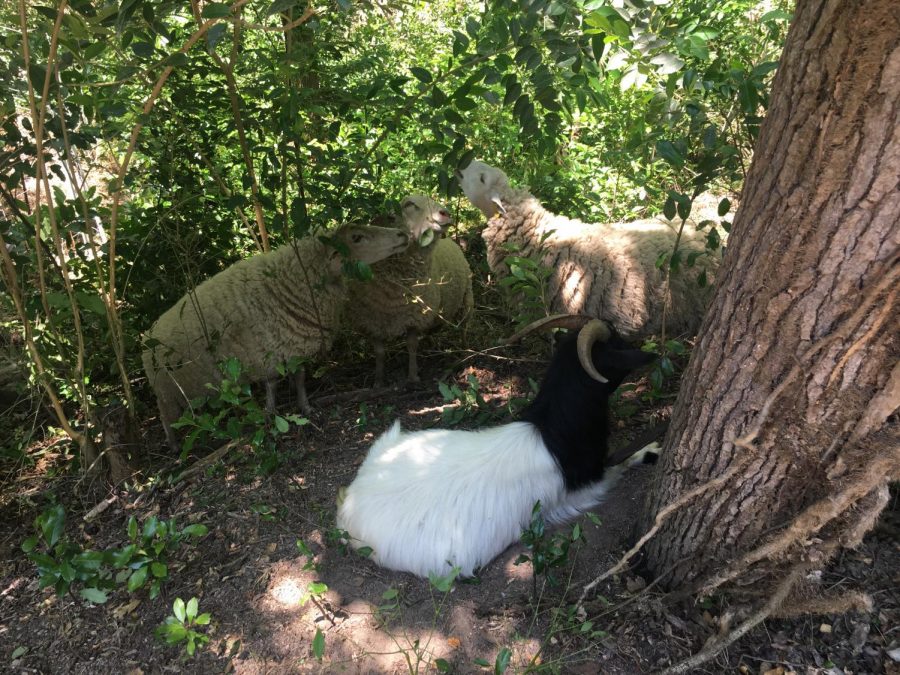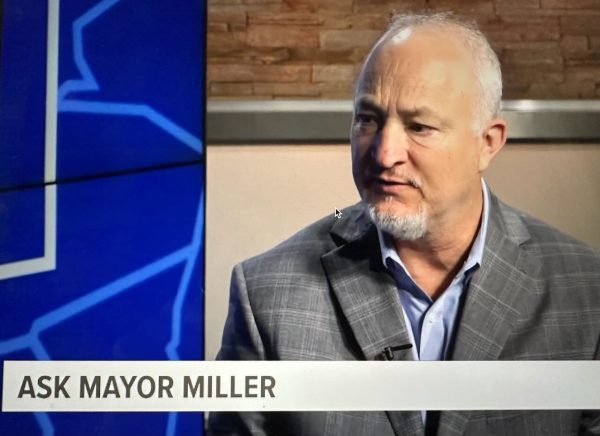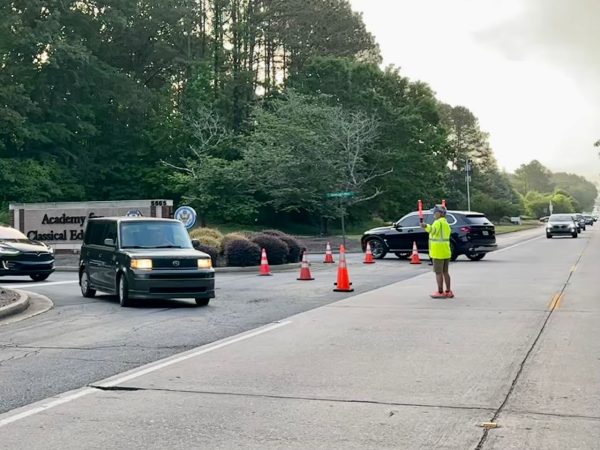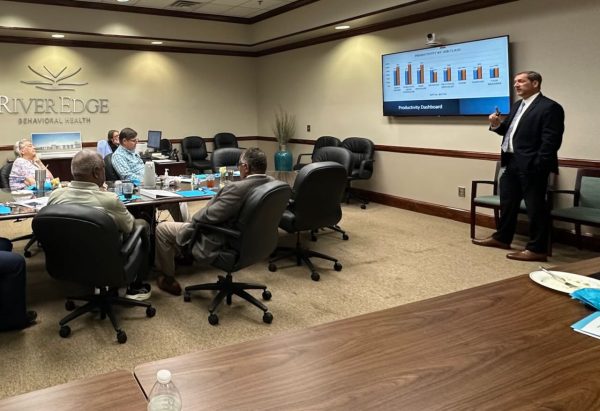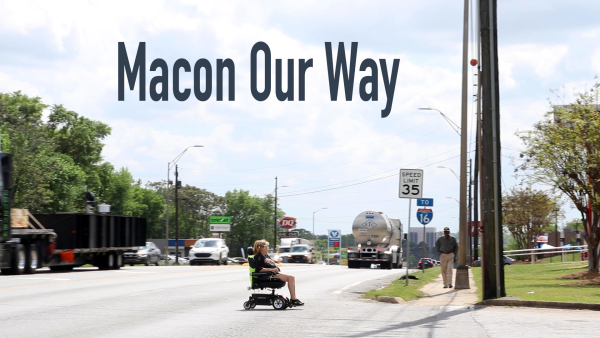Sheep are eating their way through Macon-Bibb’s newest park
The Cud Crew is eating away poison ivy and briars in Randall Heights Park between East Buford and West Buford roads off Ingleside as the county plans a passive park on the 2.3-acre lot donated to Macon-Bibb County.
When Mayor Robert Reichert was a young boy growing up in Ingleside, a small brook often lured him to the woods between East Buford and West Buford roads.
“I spent countless hours down there playing in the creek,” Reichert told current neighbors who gathered early this year to talk about what to do with the land that was donated to Macon-Bibb County.
“There is a national effort to provide a park greenspace within a 10-minute walk of everybody,” he told about 60 people who gathered in late January at the Society Garden.
The hilly, overgrown, 2.37-acre wooded lot is loaded with poison ivy and briars which proved to be a challenge for the county to clear.
Cue the sheep and the goat.
Last week, the Cud Crew descended on the sliver of land off Ingleside Avenue between Pierce and Corbin avenues.
“These sheep essentially are going to kind of help us clear out this nasty understory brush, poison ivy and all the other briars and stuff that nobody else wants to deal with,” Macon-Bibb Parks & Beautification Director Mike Glisson said as he watched the animals work Tuesday afternoon. “The terrain is kind of difficult to navigate with machines and things like that. … Goats and sheep can go wherever they want.”
The 13 sheep and one goat are constrained by an electric fence and have already devoured a good portion of the vegetation in the enclosure that’s been their home since late last week.
Cud Crew owner Mark Vanderhoek said his animals actually seek out the poison ivy first.
“As soon as they move into a new place, they kind of snoop around for what they like and they eat that first. Usually that’s poison ivy. They like kudzu, too,” Vanderhoek said.
The goat and sheep will clear out the low vegetation and strip the leaves off the small trees.
Vanderhoek will go back and remove those stripped branches and bare stalks.
“We wait until after they’ve done it so that they eat all the poison ivy and stuff and it’s a little less treacherous for us to deal with. So, I’ve got some hand clearing to be doing around here,” he said.
In his khaki overalls and cap, Vanderhoek gathered some grain in a bin to demonstrate how he can move the flock to new territory.
“Sheep, sheep, sheep, sheep,” Vanderhoek called in a higher pitched voice.
The site of the food trough set off a cacophony of bleating as the crew grabbed a corn snack before resuming their diet of leafy greens.
What the park will eventually become is going to be much clearer to envision once the underbrush is gone and the lot is opened up a little, Glisson said.
The county will eventually remove fallen trees and take down some others, but largely leave it in a natural state.
“No big playgrounds or anything like that,” Glisson said. “Just kind of paths along the creek, maybe a few wooden bridges crossing the creek. Maybe a picnic table or two and some natural paths. Something very low-impact, low-key.”
In 2014, the family of the late Dorothy A. Gilbert donated the park to the county with the stipulation it be a passive public space known as Randall Heights Park, although it was not initially clear for whom the park is named.
The commission agreed to maintain the greenspace and improve it to be a passive park “as time and finances allow.”
Glisson said initial estimates from tree companies to clear all the land were about $15,000 but the Cud Crew was hired for less than half of that. He expects the total cost, including the additional large tree removal to come in under that $15,000 mark.
Neighbor Tim Burgamy lives across the street and supports the county cleaning up the land and letting people enjoy it.
“We already have a lot of walkers and runners, dog walkers that come down through that area anyway,” Burgamy said at the forum. “I think it would be a good idea to put a lot of cherry blossom trees down there.”
Felicia Haywood, who also attended the informational meeting, appreciated the natural beauty of the landscape.
“We saw hundreds of birds… many different species,” Haywood said.
In her mind, the park should be left to the birds.
“That moment I saw it, I said, ‘No, this should not be a human park, because there’s a human park on the other end of Ingleside,’” Haywood said.
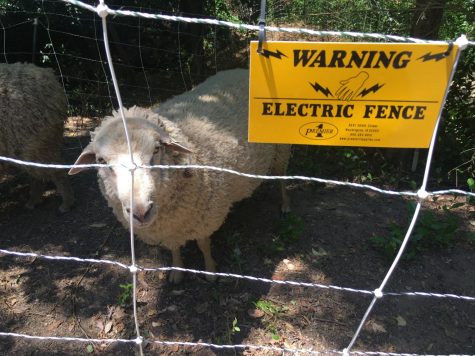
For the next few weeks, it will belong to the sheep and goat who will be eating their way through the dense underbrush.
Vanderhoek will be moving the electric fencing to keep them on task in new territory.
The public is welcome to come look, but don’t touch, he said.
“Don’t feed them. Don’t reach in and grab them and don’t touch the fence, Vanderhoek said. “Otherwise, come and enjoy them.”
Contact Civic Reporting Senior Fellow Liz Fabian at 478-301-2976 or fabian_lj@mercer.edu.



